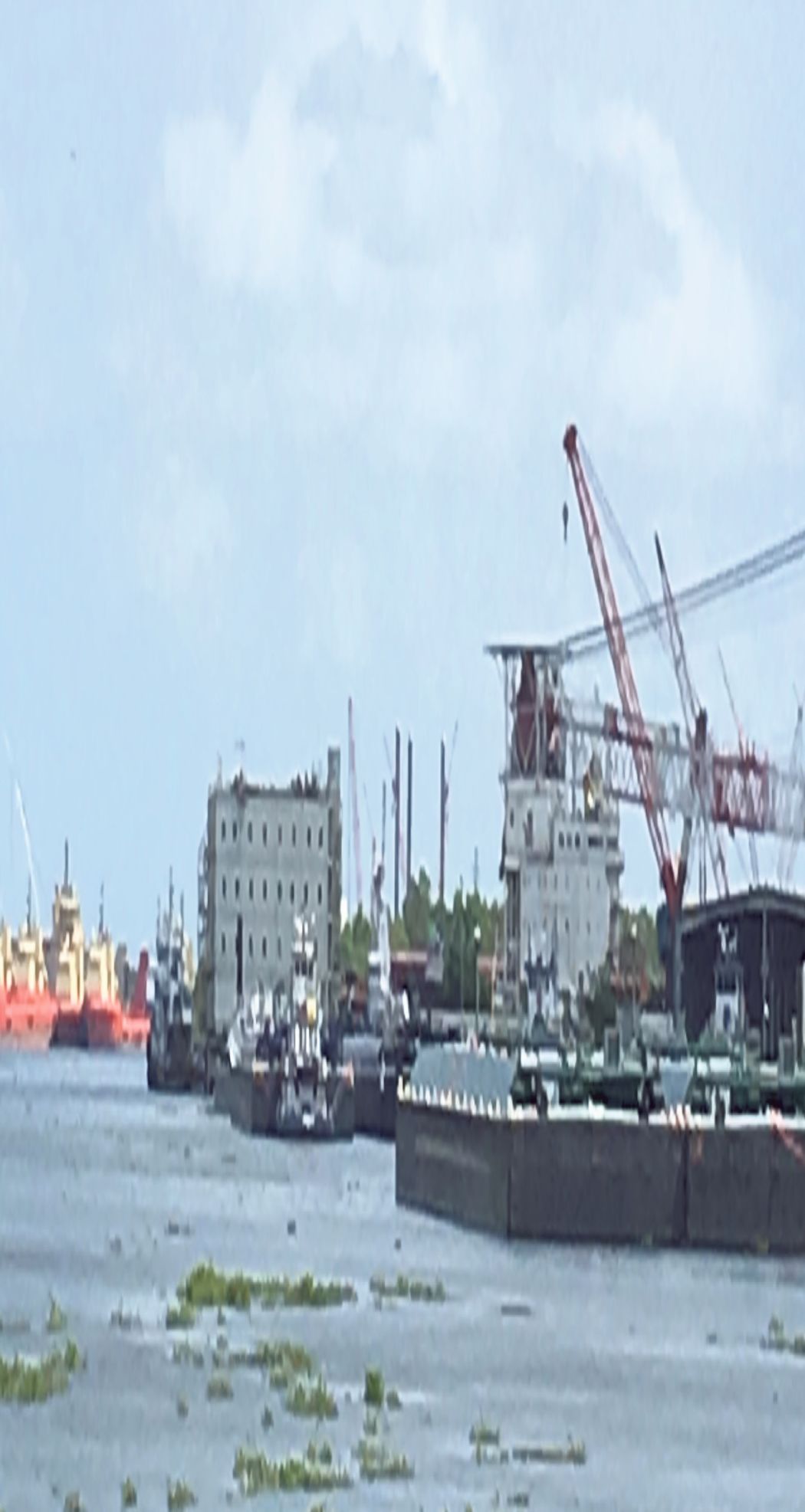
Southdown Elem. celebrates before demolition
May 24, 2016
MPA’s New Date
May 24, 2016As the Bayou Region clings tight to whatever work local companies can find and keep during a harrowing oil-and-gas industry downturn, local officials say the ability to maximize use of a critically vital waterway is more important than ever.
The U.S. Army Corps of Engineers says its people are doing their best – within their parameters – to keep maintenance dredging of the Houma Navigation Canal as close to recommended schedules as possible. They are also willing and able to perform required evaluation of the waterway for potentially deeper dredging to accommodate larger ships, an accommodation that the marine industry says is vital for future growth.
But the path to that solution, all involved acknowledge, is complex and multifaceted, involving not just the Corps but cooperation of Congress and an element of the industry itself. The reality that emerges points to a long wait for a deeper canal. Maintenance dredging is seen as a bit easier to accomplish, but despite best efforts of the Corps and other entities, still not up to par, says Terrebonne Port Director David Rabalais.
“The federal government does not allocate enough money to maintain the channels we have,” he said in an April interview. “They barely allocate enough to satisfy what is needed for the Mississippi River.”
Considering failures of federal resources to fund work on the canal that is clearly authorized, Rabalais and other port supporters agree, the coveted cutting of a deeper main channel is still seen as a nearly impossible dream. Still, they vow to keep pressing for it and maintain hope that one day soon it can come to pass.
The 40.5-mile long canal is authorized for a 12-foot depth currently. The hope is for a future 15-foot depth.
The 12-foot threshold is difficult to maintain, however, in large part due to silting that occurs in the lower reaches of the channel. That can make navigation difficult for large ships. And closer to Houma, lack of depth has limited the size of ships that can be built and floated onto the water, which has caused major companies to either leave the area or leave local ports off their radar for future relocation.
In the meantime, Rabalais said, the port is on the verge of securing permits for what he calls “escort dredging,” in which tug boats tethered to a vessel push away silt and obstructions ahead of its passage.
“We are on the verge of getting that approval,” he said. “Once we prove it works, we will file for a permanent depth of 15 feet. Within five or 10 years, then, when a vessel gets to the sea buoy [navigators] can get them in.”
The plan is not perfect, Rabalais acknowledges, but could be a better route to getting the preferred depth, with fewer complications than past efforts.
Asked about a permanent 15-foot depth, Corps spokesman Ricky Boyett confirmed that, indeed, an act of Congress is required.
“For the Corps to begin construction of a project, the study would have to be authorized for construction by Congress and have the necessary funds appropriated for the project,” he explained.
Meanwhile, the Louisiana Department of Transportation and Development is at work on a feasibility study for the project.
This year, the Corps has received $1.2 million in operation and maintenance funds, Boyett said, for dredging that will maintain the currently-approved depth, but acknowledged that it will be spread thin.
“We are scheduled to conduct dredging of the Houma Navigation Canal this summer,” Boyett said. “We try and use the funds in a manner that maximizes the benefits we get from the maintenance work as they are not enough to restore the channel to its authorized depths.”
Rabalais said he is continuing efforts to increase the on-paper profile of the port, which competes for maintenance dollars with other waterways nationwide.
At every chance he gets, Rabalais said, he is trying to convince boat and ship owners to report the tonnage of their cargos throughout Terrebonne Parish, which the port’s authorized jurisdiction encompasses. Prior efforts to document all the cargo that is located in the port, including newly constructed ships and barges – they count – have increased the port’s cargo standing, which has allowed for the greater allocation than in prior years.
Rabalais said he is grateful to the federal officials and Corps personnel who have accomplished what they have been able to do so far, as well as efforts of the state and federal legislative delegations.
“Without this everything we worked so many years to build we are losing it,” he said. “You can only hang on for so long, and the industry has been screaming since 1995 to dredge the channel deeper.”











